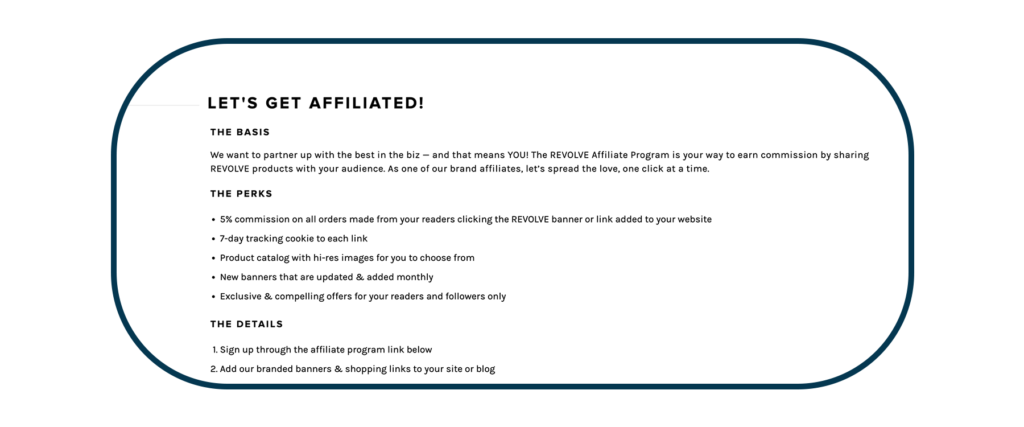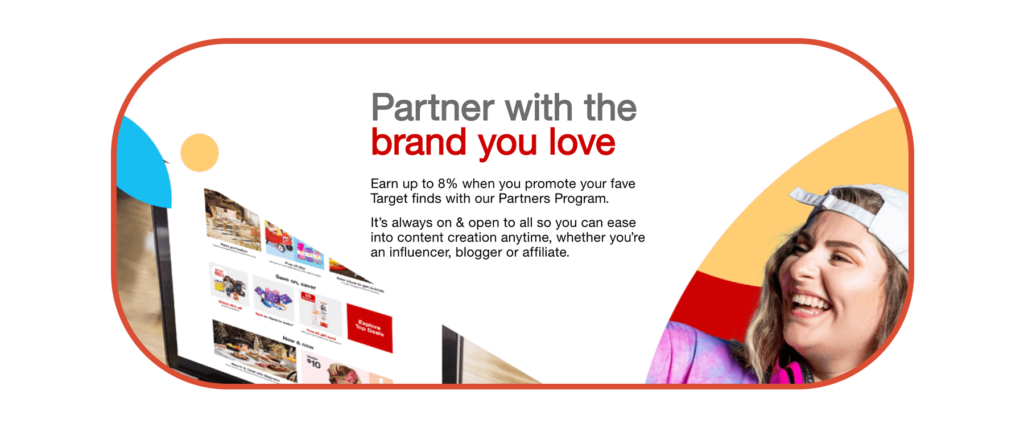Affiliate marketing might seem absolutely foreign to you and your business, but if you’ve ever clicked on an influencer’s Amazon storefront, you actually have a first-hand experience with the concept. Yes, even if you haven’t purchased anything directly from said influencer’s page but went on to place an Amazon order within 30 days of first visiting the influencer’s suggested items.
Affiliate marketing is a type of digital advertising where a business (AKA the merchant) pays a handful of marketers (known as affiliates) to promote their products. The affiliate gains a commission through creating content that hypes up said product—or at least explaining its benefits— which they can push out on all kinds of platforms: blogs, digital magazines and of course, posts on social media.
Naturally, this is a very popular revenue stream for influencers, as it’s a relatively easy way to generate a profit from the items they’re promoting. All they have to do is pair their content with a trackable link and these creators can make a commission from each sale they make. If a product ends up going viral among their audience, that can be a huge windfall for both the affiliate promoting it and the merchant selling it.
Since this type of marketing is based on the items sold—i.e., commissions are only paid out when a sale is made—it requires little up-front funding from the brand. And both parties involved can generate revenue at any time, from anywhere. When you think about it, it’s a very mutually beneficial form of marketing.

How Does Affiliate Marketing Work?
The affiliate shares content about a product from the merchant, which can be evergreen or campaign-focused, including a trackable link for their followers. This link is often generated through the merchant’s affiliate network, like Skimlinks, AWIN, ShareASale, Commission Junction and so on.
Affiliate marketing often uses cookies to track the traffic through these links and, like edible cookies, they come with expiration dates usually spanning 30, 45 or 60 days. The lifespan of the digital cookie determines how long the affiliate can make a profit through the clicks on their campaign. Once the cookie expires, the network confirms the purchase and the influencer gets paid.
The affiliate’s profit is tied to each successful sale, with commission rates varying from the merchant, the time of year, and the type of campaign. These rates can be percentages or flat fees, based on the affiliate agreement.
For example, Revolve pays their ambassadors a 5% commission on all sales, with a 7-day cookie window. While Target’s ambassador program offers up to 8% to their partners. It’s not uncommon for businesses to list the details of their program on their website, alluring potential affiliates and providing ample research (should you want to check out what your industry leaders and competitors are doing in this space).
Through their respective affiliate programs, merchants are able to track sales from each creator and gather even more specific data, including average order value and basket size. This allows brands to understand the influence a creator may have on their audience, including who can drive sales, whose community is extremely loyal…and who might’ve bought 95% of their followers.

Is Affiliate Marketing Worth it For Your Brand?
If you’re looking for a cost-effective and efficient way to drive traffic to your website, while increasing profits and driving sales, affiliate marketing is a great solution. Since it’s also a deeply collaborative tool, it’s in the affiliate’s best interest to create strong content that performs. They also have a vested interest in not only driving sales but also engaging with their audience beyond just making strong content.
For your business, it can be beneficial to build trust with potential consumers by partnering with the creators they relate to and respect. If you feel the UGC around your brand could be more diverse and come from a variety of new voices, affiliate marketing is a strong option, while also being an effective avenue for reaching new, niche audiences.
Affiliate marketing can also be really cost-effective. While some larger and more established affiliates will ask for a hefty flat rate fee plus a commission rate, it is possible to find affiliates who will work on commission only. That means your business will only be spending money on acquiring actual customers—not luring in potential buyers—meaning this part of your business will be purely performance-driven. While affiliate marketing can certainly lead to more impressions and more clicks to your site, those are just added benefits and not something you’ll be directly paying for.
However, it’s worth noting that there are a few downsides to affiliate marketing. If you’re working with low-quality affiliates who are consistently producing traffic for a number of businesses, their focus on your products could be scattered, infrequent and just plain ineffective. Depending on your approach, scaling this program can be important to its success, which can lead to a loss of creative control on your part. This makes it all the more imperative to do in-depth research on who you want to represent your business and your products, making sure they align with your brand values and won’t hurt your reputation.
As you scroll through Instagram or watch YouTube videos, keep an eye out for affiliate links. You’ll soon understand why this form of marketing has emerged as a reliable tool in the influencer space, allowing businesses to layer their influencer programs and scale the voices who are promoting their products. What’s not to love about that?
